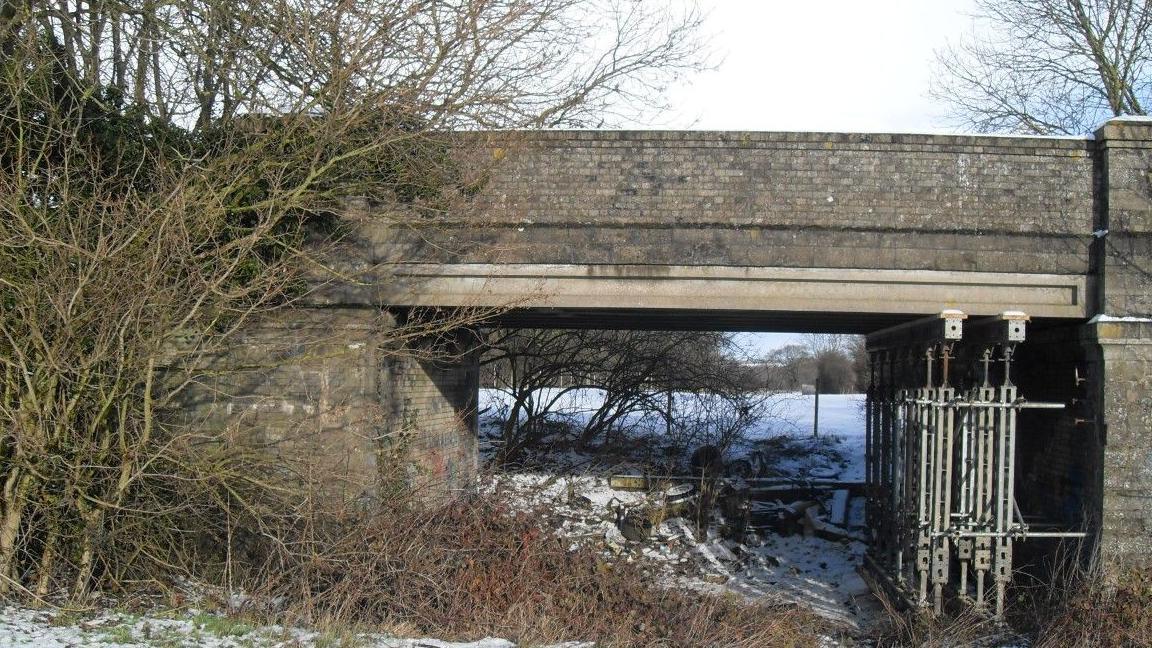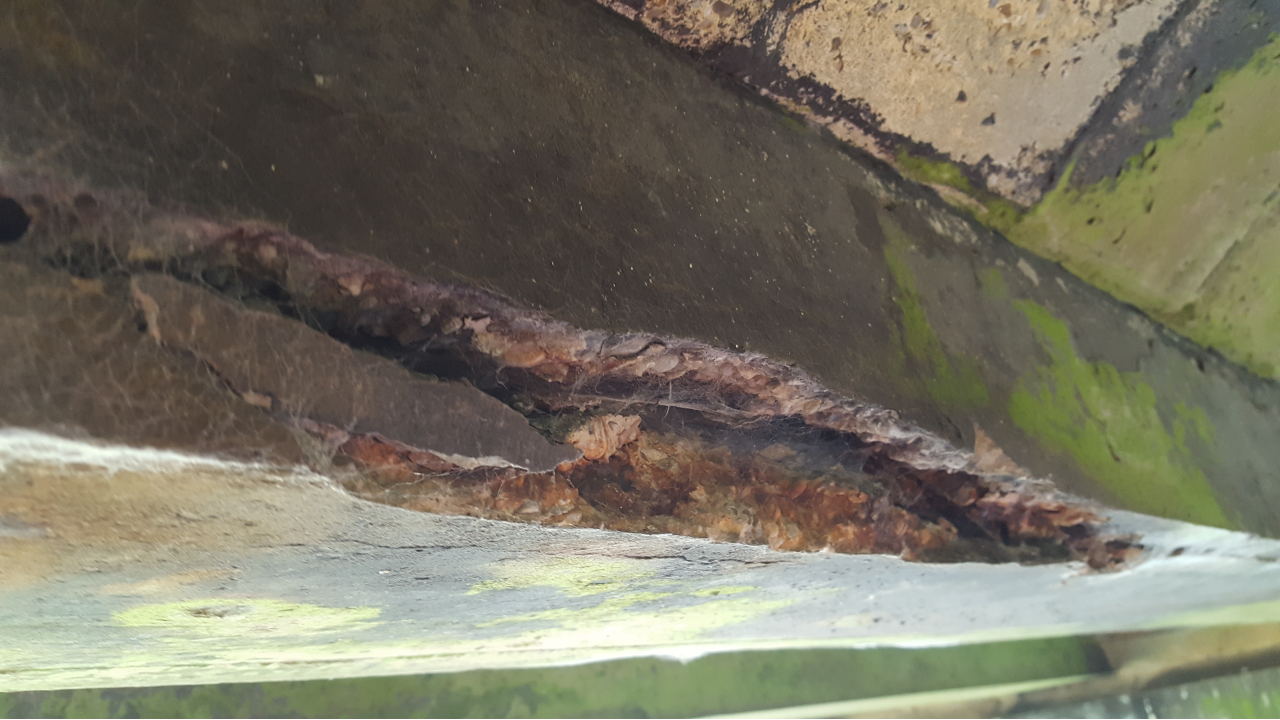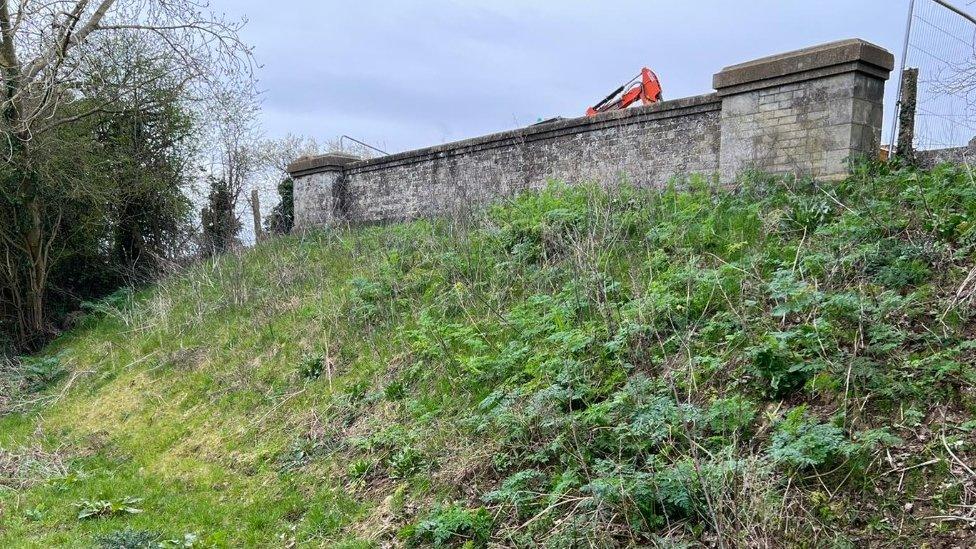Public inquiry into infilled bridge due to start

Congham Bridge in December 2009, showing a tree growing into wingwall and propping of the deck
- Published
A three-year long battle to force National Highways to remove concrete used to infill a historic bridge is to be decided by the planning inspector at a public inquiry.
So why was the Congham Bridge near King's Lynn filled in and why is a public inquiry being held?
What is infilling of a bridge?
According to National Highways, "infilling is when we support a bridge by placing structural fill material under the whole of the arch to prop it up from underneath".
The material is usually crushed stone, recycled building material and foamed concrete.
A century after Congham Bridge was opened, it had become corroded and began to develop fractures.
This led to National Highways deciding to fill it in with concrete in 2021, arguing it had “serious structural issues” meaning it had become unsafe and that it was the most cost-effective action it could take.

The Congham Bridge is the subject of a public inquiry to decide if concrete should be removed from within and the bridge restored
Why was the action controversial?
It was supposed to be a temporary measure.
Highways England said the work carried out was an emergency measure to support the structure - but it later broke permitted development regulations when it failed to remove the concrete within 12 months.
In October, King's Lynn and West Norfolk Borough councillors rejected an attempt by National Highways to apply for retrospective permission for the work to be made permanent.
Instead, the council took enforcement action against National Highways.
A public inquiry at the Duke's Head Hotel in King's Lynn, due to start on 21 May, will see officials from the Planning Inspectorate - the government department that presides over planning disputes - hearing evidence from both sides before making a judgement.
Why is the bridge special?
Congham Bridge is one of just six which were built in the 1920s by William Marriott, engineer of the Midland and Great Northern Railway, featuring curved wingwalls and a "rare surviving example of an early modular concrete structure".
The railway route once connected South Lynn with Fakenham before continuing on to Great Yarmouth.
The line closed in 1959, preceding the Beeching cuts the following decade, which led to vast sections of the railway network to shut.
But the bridge has remained in use, carrying a quiet country road, St Andrews Lane, across the now-abandoned track.
Heritage groups claim the structural issues were misrepresented and that it should have been repaired to preserve this piece of railway history.

Damage in a bridge beam in 2019
What do all the groups want to happen next?
Michael de Whalley, chairman of Congham Parish Council, said in December: "National Highways' actions were very frustrating.
"There are fantastic possibilities if it is reopened, but how do you maintain a bridge if it is encased in concrete?"
The parish council had hoped the work would be undone so the bridge "can be used as something more constructive such as a cycleway or greenway".
Hélène Rossiter, head of the Historical Railways Estate, external at National Highways, said recently that infill was "essential to ensure the bridge can carry traffic safely".
"We do not feel the council's decision adequately reflects the safety concerns raised, which is why we are lodging an appeal with the Planning Inspectorate."
Meanwhile, Graeme Bickerdike, of the Heritage Railway Estate Group, external, which wants the infill removed, claimed new information had revealed a “clearer picture” about the circumstances and decision-making that resulted in the bridge’s infilling.
What happens at the inquiry?
Thousands of statements and pieces of evidence have been submitted ahead of the inquiry and experts will appear before the inspector at the meeting.
The Public Inspectorate will hear both sides of the argument before making its decision at a later date.
Congham Bridge is one of 51 bridges that have been infilled since 2013 at a cost of £8m, according to the Heritage Railway Estates Group.
Engineers have recently completed digging out hundreds of tonnes of concrete from Great Musgrave Bridge in Cumbria after Eden District Council ordered it to restore the Victorian structure last year.
Follow Norfolk news on Facebook, external, Instagram, external and X, external. Got a story? Email eastofenglandnews@bbc.co.uk, external or WhatsApp us on 0800 169 1830
- Published20 February 2024

- Published13 December 2023
